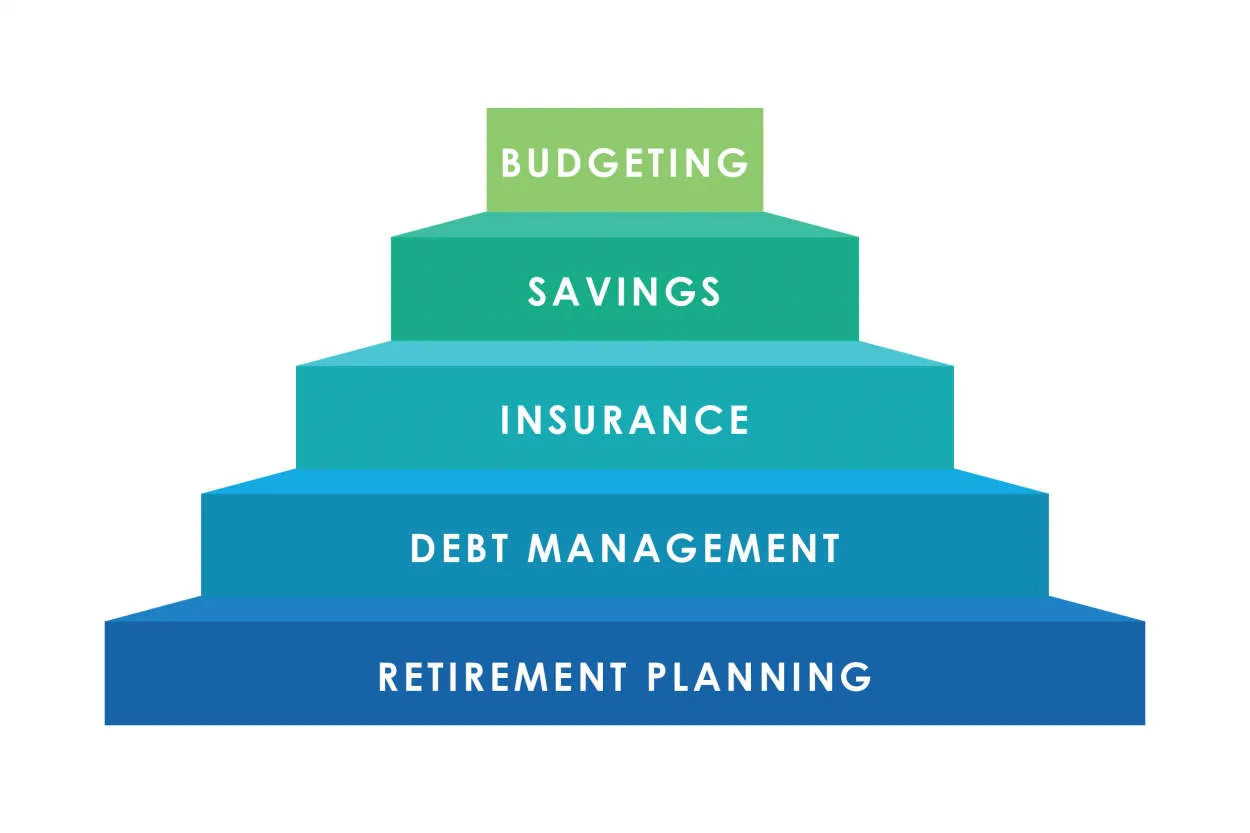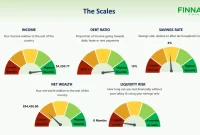Creating a Personal Financial Plan: A Comprehensive Approach
Setting Financial Goals and Priorities
When creating a personal financial plan, it is essential to set clear goals and priorities. By defining what you want to achieve financially, you can develop a comprehensive approach to manage your money and achieve financial success. Here are some key aspects to consider:
1. Assess your current financial situation
Before setting any goals, it’s vital to evaluate your current financial status. Analyze your income, expenses, debts, and savings. This assessment will help you understand where you stand and identify areas that need improvement.
2. Define your short-term and long-term goals
Create a list of specific financial goals you want to accomplish. Short-term goals may include building an emergency fund or paying off credit card debt, while long-term goals may involve saving for retirement or buying a house. Prioritize your goals based on their importance and feasibility.
3. Make your goals SMART
Set SMART (Specific, Measurable, Achievable, Relevant, Time-bound) goals to increase your chances of success. For example, instead of setting a vague goal like “save money,” specify an exact amount and a deadline, such as “save $10,000 for a down payment on a house within two years.”
4. Create a budget and stick to it
A budget helps track and control your spending. Allocate your income towards different expense categories, such as housing, transportation, groceries, and entertainment. Be realistic, and avoid unnecessary expenses to free up more money for saving and achieving your goals.
5. Build an emergency fund
Establishing an emergency fund is crucial to protect yourself from unexpected financial setbacks. Aim to save at least three to six months’ worth of living expenses in a separate savings account. Having this safety net will provide peace of mind and prevent you from going into debt in times of crisis.
6. Invest for the future
Consider investing your money to grow your wealth over time. Research different investment options, such as stocks, bonds, real estate, or mutual funds. Diversify your portfolio to minimize risk, and consult a financial advisor to determine the best investment strategy based on your goals and risk tolerance.
7. Review and adjust your plan regularly
Financial goals can change over time, so it’s important to review and adjust your plan periodically. Life events, economic conditions, and personal circumstances may require modifications to your goals and priorities. Stay proactive and make necessary adjustments to stay on track.
By setting clear financial goals and priorities, you can create a personal financial plan that guides your decisions and actions. Remember, consistency and discipline are key to achieving long-term financial success. Start today and take control of your financial future!
Budgeting and Tracking Expenses
In order to create a successful personal financial plan, it is crucial to focus on budgeting and tracking expenses. Budgeting allows individuals to have a better understanding of their income and expenses, and helps them prioritize their spending. By setting a budget, you can prevent overspending and ensure that your money is allocated towards your financial goals.
Tracking your expenses is equally important as it provides valuable insights into your spending habits. This process involves keeping a record of all your expenses, including both fixed and variable costs. By doing so, you can identify unnecessary expenses and make adjustments to your budget if needed.
One effective way to track your expenses is by categorizing them. This could include categories such as housing, transportation, food, entertainment, and miscellaneous. By categorizing your expenses, you can easily identify areas where you may be overspending and make necessary adjustments.
Another useful tool for budgeting and expense tracking is using personal finance apps or software. These tools help automate the process by linking your bank accounts and credit cards, making it easier to monitor and categorize your expenses. They may also provide visual representations of your spending habits, allowing for better analysis and decision-making.
Remember, budgeting and tracking expenses are ongoing processes. It is important to review and update your budget regularly to accommodate any changes in your financial situation or goals. By making budgeting and tracking expenses a priority, you are taking control of your finances and working towards a more secure financial future.
Investment Strategies for Long-Term Growth
When it comes to creating a personal financial plan, it is crucial to include investment strategies that promote long-term growth. These strategies can help individuals build wealth over time and achieve their financial goals. Here are some key investment strategies to consider:
1. Diversify Your Portfolio
One of the most important investment strategies is diversification. By spreading your investments across different asset classes, such as stocks, bonds, and real estate, you can reduce the risk associated with any single investment. Diversification helps protect your portfolio from market volatility and potential losses.
2. Invest in Index Funds
Index funds are a type of mutual fund or exchange-traded fund (ETF) that tracks a specific market index, such as the S&P 500. These funds offer broad market exposure and have low expense ratios. Investing in index funds allows you to participate in the overall growth of the market without having to pick individual stocks.
3. Consider Dollar-Cost Averaging
Dollar-cost averaging is an investment strategy where you invest a fixed amount of money at regular intervals, regardless of market conditions. This approach can help mitigate the impact of market fluctuations and allows you to buy more shares when prices are low and fewer shares when prices are high. Over time, this strategy can lower your average cost per share.
4. Rebalance Your Portfolio
Periodically rebalancing your portfolio is essential to maintain your desired asset allocation. Over time, certain investments may outperform others, causing your portfolio to become unbalanced. By rebalancing, you sell some of the overperforming investments and buy more of the underperforming ones, bringing your portfolio back in line with your target allocation.
5. Stay Invested for the Long Term
Investing is a long-term journey, and it’s important to stay invested even during market downturns. Trying to time the market and making frequent changes to your investment strategy can be counterproductive. By maintaining a long-term perspective, you can benefit from the power of compounding and ride out short-term market fluctuations.
By incorporating these investment strategies into your personal financial plan, you can increase your chances of achieving long-term growth and financial success. Remember to consult with a financial advisor to tailor these strategies to your specific needs and risk tolerance.
Estate Planning and Retirement Savings
Estate planning and retirement savings are two crucial aspects of a comprehensive personal financial plan. Both play a vital role in ensuring financial security and peace of mind for individuals and their families.
When it comes to estate planning, it involves preparing for the management and distribution of your assets during and after your lifetime. This includes creating a will, establishing trusts, and assigning beneficiaries for your financial accounts and insurance policies.
By devising a well-thought-out estate plan, you can minimize the potential for disputes among family members and ensure that your assets are distributed according to your wishes. It also allows you to protect your loved ones by appointing guardians for minor children and making provisions for their education and future well-being.
On the other hand, retirement savings are crucial for maintaining financial independence and a comfortable lifestyle during your golden years. It involves setting aside funds during your working years to ensure a steady income stream when you retire. Common retirement savings vehicles include employer-sponsored 401(k) plans, individual retirement accounts (IRAs), and annuities.
Proper retirement planning requires determining how much money you will need to retire comfortably, considering factors such as living expenses, healthcare costs, inflation, and any desired lifestyle adjustments. It also involves choosing appropriate investment strategies to grow your retirement savings and managing your portfolio to mitigate risks as you approach retirement.
In summary, estate planning and retirement savings are vital components of a comprehensive personal financial plan. While estate planning ensures the proper management and distribution of your assets after your passing, retirement savings provide the financial means to enjoy a secure and fulfilling retirement. By addressing both aspects, individuals can safeguard their assets and fulfill their retirement goals.
Conclusion
In conclusion, creating a personal financial plan is crucial for achieving financial stability and success. By taking a comprehensive approach and considering factors such as budgeting, saving, investing, and managing debt, individuals can take control of their finances and work towards their long-term goals. With careful planning and regular reviews, a solid financial plan can lead to a secure and prosperous future.




